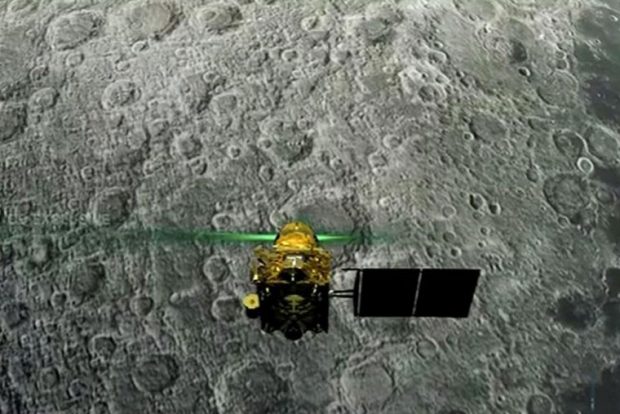
You have inspired us, will explore solar system together: NASA to ISRO
PTI, Sep 8, 2019, 12:38 PM IST

Washington: NASA has lauded India’s historic Chandrayaan-2 mission, saying the Indian Space Research Organisation’s attempt to soft-land Vikram module on the lunar South Pole has “inspired” it and the US space agency is looking forward to explore the solar system with its Indian counterpart.
The Indian Space Research Organisation’s (ISRO) plan to soft-land Chandrayaan-2’s Vikram module on the uncharted South Pole did not go as per script on Saturday, with the lander losing communication with ground stations during its final descent.
“Space is hard. We commend ISRO’s attempt to land their Chandrayaan2 mission on the Moon’s South Pole. You have inspired us with your journey and look forward to future opportunities to explore our solar system together,” NASA said in a tweet on Saturday.
Former NASA astronaut Jerry Linenger told PTI on Saturday that the lessons learnt from India’s “bold attempt” to soft land Chandrayaan-2’s Vikram module on the lunar surface will help the country during its follow up missions.
“We should not be too discouraged. India was trying to do something very, very difficult. In fact, everything was going as planned as the lander came down,” Linenger said.
The Chandrayaan-2 mission was launched on July 22 by a Geosynchronous Satellite Launch Vehicle Mark III (GSLV Mk III).
The spacecraft began its journey towards the moon, leaving the earth’s orbit on August 14 after a crucial manoeuvre called Trans Lunar Insertion or TLI that was carried out by ISRO to place the spacecraft on “lunar transfer trajectory”.
According to NASA, only half of the lunar missions involving landing on moon surface have succeeded in the last six decades.
There have been a total of 109 lunar missions from 1958, out of which 61 were successful, says the US space agency’s ‘Moon Fact Sheet’.
As many as 46 missions involved landing on the lunar surface, including landing of the rover and sample return. Out of these, 21 were successful, while two were partially successful.
Sample return means mission that involves collecting and returning samples to earth. The first successful sample return mission was Apollo 12 of the US launched in November 1969.
From 1958 to 1979, only the US and the USSR (now Russia) launched Moon missions. In these 21 years, the two countries launched 90 missions. There was a lull in the decade that followed with no lunar missions from 1980-89.
Japan, the European Union, China, India and Israel have been late entrants.
The first lunar soft landing and first pictures from the lunar surface came from Luna 9, launched by the USSR in January 1966.
The Apollo 11 mission was the landmark mission through which humans first stepped on the lunar surface. The three-crew mission was headed by Neil Armstrong.
From 2009-2019, ten missions have been launched of which five have been sent by China, three by the US, and one each by India and Israel.
Udayavani is now on Telegram. Click here to join our channel and stay updated with the latest news.
Top News

Related Articles More

ISRO to carryout ambitious space docking experiment on Thursday

ISRO has major missions ahead, says newly appointed chairman

Encryption casts a shadow on Crypto adoption in India amid rising scams

Pune-based startup develops AI-based pulse diagnostic tool for Ayurveda practitioners

Bengaluru-based cybersecurity firm named as ‘major player’ in Asia Pacific 2024 list of vendors
MUST WATCH
Latest Additions

Mangaluru Lit Fest to be held on Jan 11 and 12

Udupi: Paryaya Shripada initiates Abhigya Anand into Koti Gita Lekhana Yajna

Notorious thief runs out of ‘time’, gets caught with 24 expensive watches, three iPhones

Namma Yatri launches operation in Mysuru

Mangaluru: Over 10 dangerous junctions on Airport Road
Thanks for visiting Udayavani
You seem to have an Ad Blocker on.
To continue reading, please turn it off or whitelist Udayavani.





















